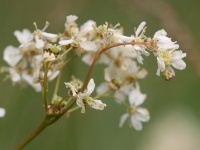Login to edit
An inheritance group references a group of content elements. It extends the functionality of the element group by passing on the content element configuration down the navigation tree.
OpenCms 8.5 Demo Content
Search for content
Page subscription
Most Recent News
Exciting new Acacia variety discovered
Sep 24, 2012
An element group (like this one) allows you to group multiple content elements together and share them on several pages.
Meadowsweet

Filipendula ulmaria, commonly known as Meadowsweet, is a perennial herb in the family Rosaceae, which grows in damp meadows.
It is native throughout most of Europe and western Asia though it has been successfully introduced and naturalized in North America.
Meadowsweet has also been referred to as Queen of the Meadow, Pride of the Meadow, Meadow-Wort, Meadow Queen, Lady of the Meadow, Dollof, Meadsweet and Bridewort.
The stems are 1–2 m (3-7 ft) tall, erect and furrowed, reddish to sometimes purple. The leaves are dark green on the upper side and whitish and downy underneath, much divided, interruptedly pinnate, having a few large serrate leaflets and small intermediate ones. Terminal leaflets are large, 4–8 cm long and three to five-lobed.
Meadowsweet has delicate, graceful, creamy-white flowers clustered close together in handsome irregularly-branched cymes, having a very strong, sweet smell. They flower from June to early September.
This article uses material from the Wikipedia article Meadowsweet and is licensed under the GNU Free Documentation License.


